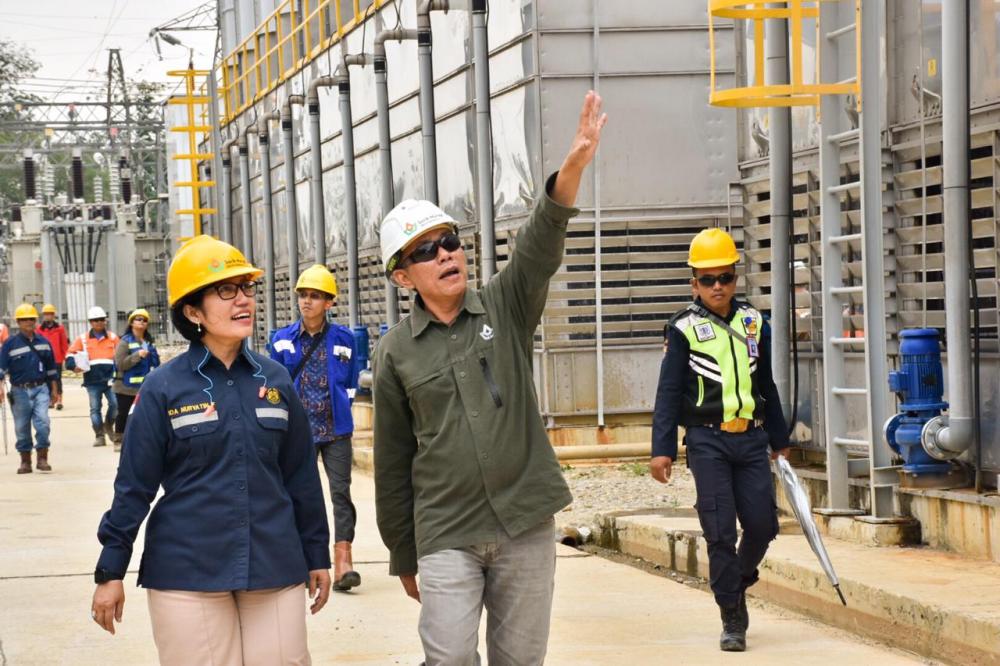Investors waiting for new regulations on geothermal development in Indonesia

Investors holding back investment into geothermal development in Indonesia waiting for a better regulatory environment that would incentivize development.
While geothermal power generation capacity has been increasing in Indonesia, investment and development of geothermal has not seen the growth it could show.
Investors still seem to refrain from developing geothermal energy. The indication, can be seen from the auction of the geothermal working area (WKP) in 2019. Of the three geothermal working areas (WKP) offered to be auctioned, no business entity was interested in submitting the bidding document.
The three WKPs are the three WKPs, Lainea WKP in Central Sulawesi, Gulunggung WKP in West Java, and Gunung Wilis WKP in East Java.
While this year, the Ministry of Energy and Mineral Resources plans to offer five WKP. Unfortunately, it is still unclear which WKP will be offered.
Institute for Essential Services Reform (IESR) Executive Director Fabby Tumiwa assesses that there are a number of reasons why WKP’s offer is lacking in demand.
One of them, said Fabby, is the consideration of the economic level of the project, because the price of electricity regulated in ESDM Ministerial Regulation Number 50 Year 2017 is considered not attractive for investment.
“In addition, investors are also waiting and seeing the steps of the government and the new cabinet,” Fabby told news outlet Kontan.co.id.
According to Fabby, the chance for a WKP auction to sell will depend on policies and regulations related to the selling price of electricity produced. In line with that, investors also need certainty over the electricity purchase contract by PT PLN (Persero).
“If the price is deemed unattractive, I think investors will not participate in the auction. So the success of the auction depends on government policy and the certainty of PLN as an off taker to buy electricity,” he explained.
Fabby said, the tariff should reflect the economics of the Geothermal Power Plant (PLTP). But the problem is that the geothermal economy varies, depending on the reservoir conditions, generating capacity, the level of exploration risk, location, and financing.
Fabby gave an illustration, in the last 10 years, geothermal contract rates have been in the range of US $ 0.11-US $ 0.12 per kWh. “Even though there is also a new PLTP that can be at US $ 0.08 per kwh,” he said.
According to Fabby, if the government wants to reduce geothermal prices below US $ 0.10 per kWh, intervention is needed in the form of an exploration risk takeover and a reduction of some levies and taxes.
Regarding the price scheme, Fabby also highlights the discourse on Feed In Tariff (FiT) or the price according to the economics of the project. The reason is that the government is currently discussing a Presidential Regulation (Perpres) to regulate the New and Renewable Energy (EBT) electricity tariff scheme and a Ministerial Regulation (Permen) ESDM that specifically regulates geothermal issues.
“The FiT policy for geothermal energy can be returned to the price. In my opinion, there needs to be a little relaxation, especially for projects that have already been in the pipeline or that will enter the brown field phase. But gradually the government is pushing for geothermal prices to be even lower, ” he explained.
Contacted separately, Chairperson of the Indonesian Geothermal Association (API) Priyandaru Effendi also agreed that economic price factors and the certainty of electricity purchase contracts were the two main things that investors considered.
“The main problems in geothermal development are tariffs in accordance with the economics of the project and certainty of purchases by PLN. Maybe the developer needs further certainty about these two things. So it is better to wait for the issuance of more interesting rules,” said Priyandaru.
Source: Kontan